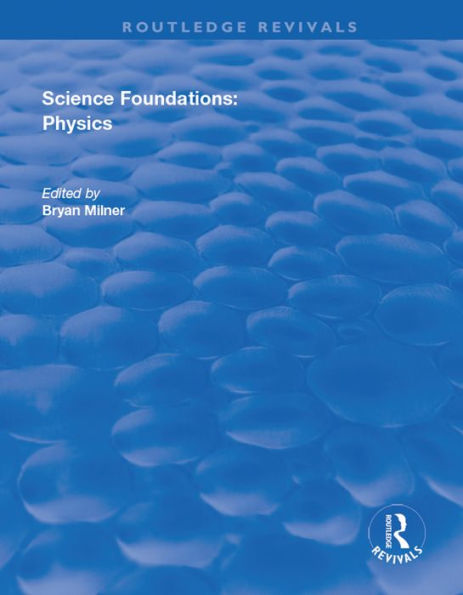This title was first published in 2001. The new edition of Science Foundations provides comprehensive coverage of single- and double-award GCSE science. It is fully revised and updated to match the new GCSE specifications, for teaching from September 2001. It contains all the material required for the foundation and higher tiers, with clear progression and explicit differentiation. 'Higher tier only' material is clearly marked in separate spreads. The language level is carefully controlled, with illustrations and layout specifically designed to make the concepts accessible. There are frequent opportunities for students to confirm their understanding of each key idea as it is introduced, via short questions and summary passages on each spread. The books include guidance for students on how to prepare for and answer their GCSE examinations, and a glossary of key words for ease of reference.
1111591542
Science Foundations: Physics
This title was first published in 2001. The new edition of Science Foundations provides comprehensive coverage of single- and double-award GCSE science. It is fully revised and updated to match the new GCSE specifications, for teaching from September 2001. It contains all the material required for the foundation and higher tiers, with clear progression and explicit differentiation. 'Higher tier only' material is clearly marked in separate spreads. The language level is carefully controlled, with illustrations and layout specifically designed to make the concepts accessible. There are frequent opportunities for students to confirm their understanding of each key idea as it is introduced, via short questions and summary passages on each spread. The books include guidance for students on how to prepare for and answer their GCSE examinations, and a glossary of key words for ease of reference.
50.49
In Stock
5
1

Science Foundations: Physics
248
Science Foundations: Physics
248eBook
$50.49
$66.99
Save 25%
Current price is $50.49, Original price is $66.99. You Save 25%.
Related collections and offers
50.49
In Stock

Product Details
| ISBN-13: | 9781351759502 |
|---|---|
| Publisher: | Taylor & Francis |
| Publication date: | 01/15/2019 |
| Series: | Routledge Revivals |
| Sold by: | Barnes & Noble |
| Format: | eBook |
| Pages: | 248 |
| File size: | 16 MB |
| Note: | This product may take a few minutes to download. |
About the Author
From the B&N Reads Blog
